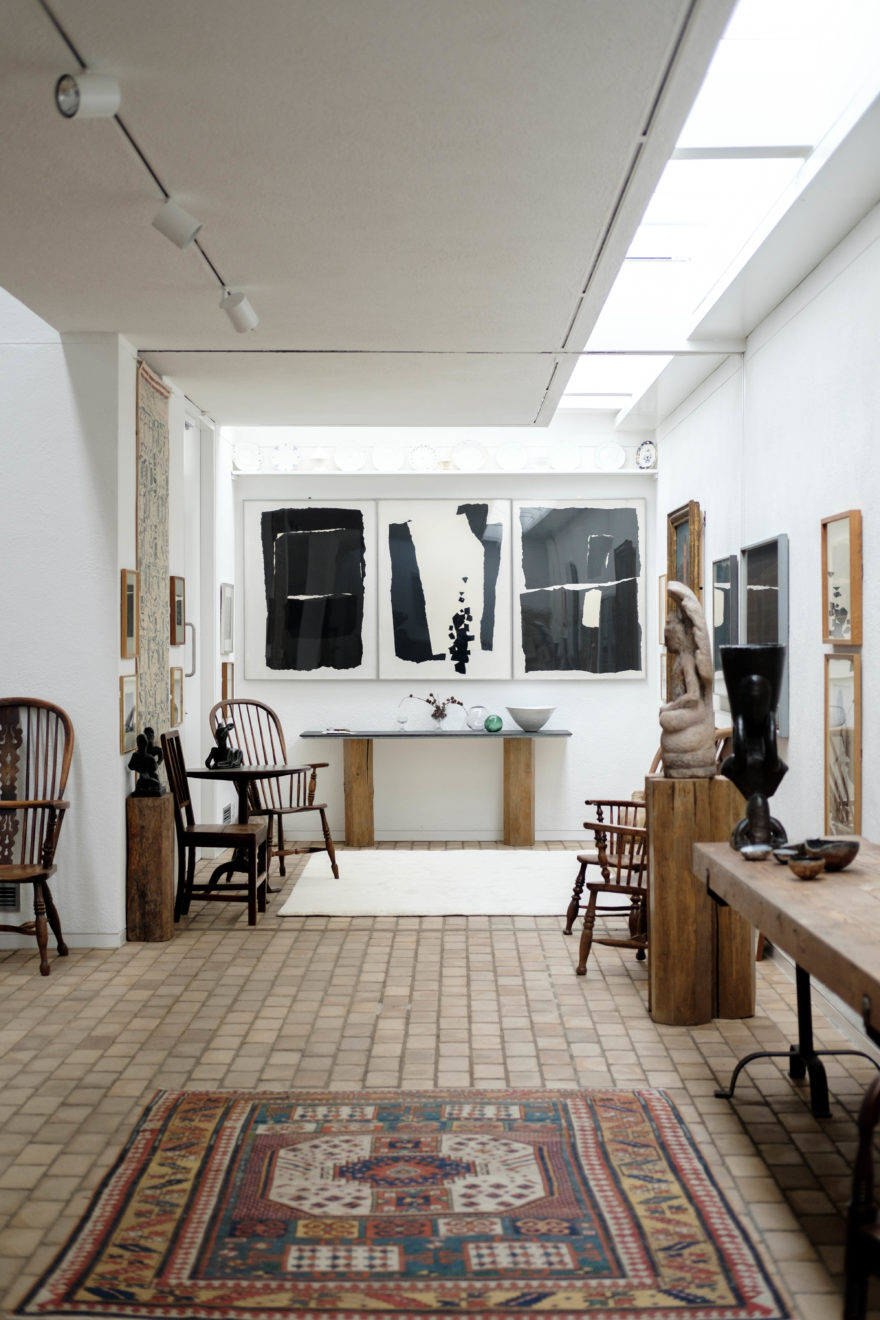Kettle’s Yard
Kettle’s Yard is an extraordinary institution, fusing art and daily life. Once the home of Jim Ede, a collector and former Tate curator who lived here between 1958 and 1973, it was donated to Cambridge University in 1966 and it is still in their care today. It was a uniquely intimate gallery from its inception, blurring the lines between private and public space where visitors are encouraged to interact with the objects on display.
Ede amassed a collection over 50 years that includes Joan Miro, Henry Moore, Barbara Hepworth and Constantin Brancusi. Art is naturally displayed alongside everyday objects which allows you to engage personally with the pieces without the trappings of a traditional gallery. Because of this intimacy, it’s sometimes easy to forget the significance of what you’re observing. The light at different times of the year, and even throughout the day, makes each visit unique, enabling you to experience each piece in a different way, encouraging you to notice new things every time you visit.
Over the years, Kettle’s Yard as a building has evolved through a series of additions. Initially, and with the help of architect Roland Aldridge, Ede substantially remodelled a collection of dilapidated cottages which now form the original part of the building. Ede wanted the house to be a “haven of rest in an over complicated life” and kept an open-house policy, personally guiding visitors around his home. In 1970 Ede commissioned Lesley Martin to build a vast gallery extension that would be “furnished with light and air”. This strongly modernist piece of architecture is softened by the objects, art and furniture within it. Ede, in his book ‘A Way of Life — Kettle’s Yard’, writes: “It starts from the cottage with a couple of generously wide steps down … and continues through an open doorway into the very large and comfortably proportioned new building, which itself develops in easy and individual stages.”
It is this flow through the different spaces, and the significant part that light plays in that experience, that has informed the latest chapter of the Kettle’s Yard story. A new extension by Jamie Fobert Architects provides a new and improved education centre and additional gallery space that allows for much more substantial works to be displayed. There’s also a shop and café area and additional rooms on the upper levels. Former Director of the gallery, the late Michael Harrison, first commissioned Fobert in 2004. When Andrew Nairne took over he extended the scope of works which, in total, took two years to build.
Fobert’s addition is a subtle extension of Ede and Martin’s ideas, almost seamlessly connecting the new space to the 70s gallery, and the original house in turn. Materials have played a big part in this – a brick floor, the oak and Douglas fir which reference furniture from the old house, and a restored original brick bench that greets you at the new entrance. Polished concrete floors run throughout most of the extension, out of which rises a folded, blackened steel stair case, with welding spots visible, that extends through the core of the new building. Fobert is not only known for his work with gallery spaces, like the Tate St Ives extension, he is also well respected for his considered residential architecture. The prestigious awards he has amassed include The Manser Medal (now the RIBA house of the year), RIBA, English heritage and the BD House of the year award for ‘Anderson House’. It is this ability to work at different scales, as Fobert describes “a sensitivity to the domestic scale and calm aesthetic of the house”, that has made this project such a success.
The beauty of the original house lies in its measured curation – elements relate intelligently to each other, telling a story as you move throughout the rooms. Forbert has successfully echoed this fable, achieving a balance that makes not only the original house but the collection of all the buildings, a work of art in its own right. There is so much to take in and enjoy. It would be a challenge for anyone to come away from Kettle’s Yard and not wonder when they can return, due to the nagging feeling that something has been missed the first time around. The collection of buildings, and the art within it, are truly inspiring, it’ll have you rearranging your own home and evaluating its contents.





















